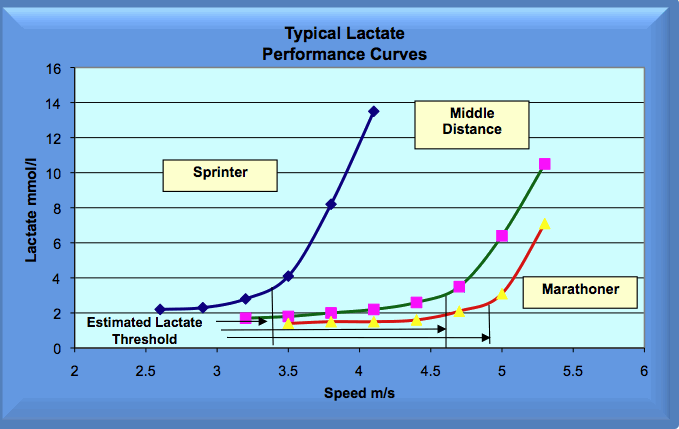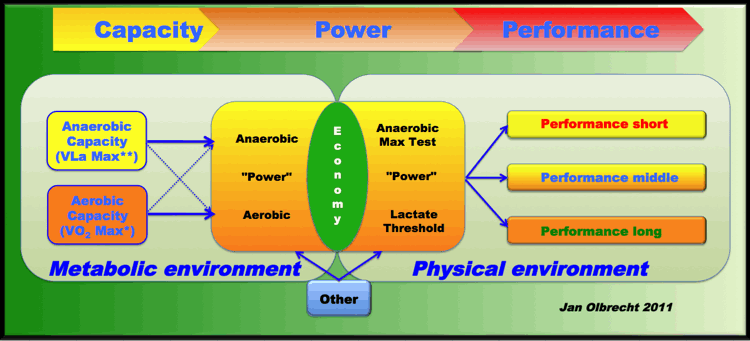Hi!
Based on the great discussion in the Seiler polarized training thread. I am wondering if anyone has solid data on how fast the adaptions occur, where the body changes its primary use of energy? I get that lots of low intensity training slowly teaches the body to use less lactate intensive energy, which carries over to race tempo (higher threshold at same lactate production) and that the hard intervals build your top end. http://forum.slowtwitch.com/...ew_flat;post=4931310

But then there was mention that, if anaerobic capacity is too high (aka the lactate curve is more sprint like) that this coach Olbrecht throws in "a couple workouts near the threshold during the pre-competition" which raises the threshold for that athlete and shifts the lactate curve to the right, "not because the aerobic system is stronger but because the anaerobic system is weaker". A "couple workouts" does not sound like it a very prolonged process, more like a few weeks at most.
I also recall Desert Dude, if I understood his comment correctly, mentioning that some amateurs shoot themselves in the foot by first properly training the low lactate systems during base, but then doing too much threshold work close to competition, thereby teaching the body to use more lactate type energy systems. This would be the opposite from the Olbrecht example above, where the athlete was too reliant on anaerobic energy to begin with.
So I am wondering how fast these changes in energy system usage occur, if it takes long time to build up aerobic capacity, how fast can threshold work thow this off? Say if a marathoner started doing sprint training, how soon before the marathon endurance wears off and gets replaced by lactate-fuelled speed? Or is there a time window, where you can increase threshold speed before it starts messing with endurance type fitness?
Based on this, which would be the optimal lactate curve for an ironman race, would that be marathoner in the above chart, with some top end reserves for the swim?
I am not schooled in exersice physiology so apologies for my lack of knowledge. Thanks
Based on the great discussion in the Seiler polarized training thread. I am wondering if anyone has solid data on how fast the adaptions occur, where the body changes its primary use of energy? I get that lots of low intensity training slowly teaches the body to use less lactate intensive energy, which carries over to race tempo (higher threshold at same lactate production) and that the hard intervals build your top end. http://forum.slowtwitch.com/...ew_flat;post=4931310

But then there was mention that, if anaerobic capacity is too high (aka the lactate curve is more sprint like) that this coach Olbrecht throws in "a couple workouts near the threshold during the pre-competition" which raises the threshold for that athlete and shifts the lactate curve to the right, "not because the aerobic system is stronger but because the anaerobic system is weaker". A "couple workouts" does not sound like it a very prolonged process, more like a few weeks at most.
I also recall Desert Dude, if I understood his comment correctly, mentioning that some amateurs shoot themselves in the foot by first properly training the low lactate systems during base, but then doing too much threshold work close to competition, thereby teaching the body to use more lactate type energy systems. This would be the opposite from the Olbrecht example above, where the athlete was too reliant on anaerobic energy to begin with.
So I am wondering how fast these changes in energy system usage occur, if it takes long time to build up aerobic capacity, how fast can threshold work thow this off? Say if a marathoner started doing sprint training, how soon before the marathon endurance wears off and gets replaced by lactate-fuelled speed? Or is there a time window, where you can increase threshold speed before it starts messing with endurance type fitness?
Based on this, which would be the optimal lactate curve for an ironman race, would that be marathoner in the above chart, with some top end reserves for the swim?
I am not schooled in exersice physiology so apologies for my lack of knowledge. Thanks
